Punjab is Pakistan’s second-largest province by area after Baluchistan and its most inhabited province. It’s deckled by the Islamic Republic of Pakistan provinces of Sindh, Baluchistan, and Khyber Pakhtunkhwa, the territorial dominion of Islamabad, and Azad Kashmir. It conjointly shares borders with the Indian states of Punjab, Rajasthan and Jammu and Kashmir. The capital of Punjab is the Lahore city, a cultural, historical, and economic center of the Islamic Republic of Pakistan.
It is Pakistan’s most industrial province with the economic sector. It is known for its relative prosperity and has an all-time low rate of poverty amongst all Pakistani provinces. It’s human development index rankings are high relative to the remainder of Pakistan.
The father of the Sikhism, Guru Nanak, was born within the geographic region city of Nankana sahib close to Lahore. Punjab is additionally the location of the Katas raj Temple that options conspicuously in Hindu mythology. Many UNESCO World Heritage Sites are situated in Punjab, as well as most historical sites are present in Punjab.
Land of Five Rivers:
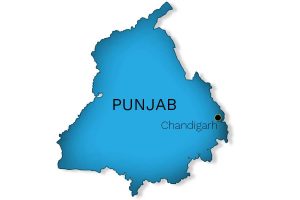 Punjab is agricultural land, consists of fertile deposit plains of Indus River. Punjab is called the earth of the “five water”.
Punjab is agricultural land, consists of fertile deposit plains of Indus River. Punjab is called the earth of the “five water”.
It is conjointly includes many mountainous regions, as well as the Suleiman Mountains, the Margalla Hills, the salt range, the Pothohar plateau.
Distributed deserts are found in southern Punjab close to the border with Rajasthan and close to the Suleiman valley. Punjab conjointly contains a part of the Thal and Cholistan deserts.
Weather in Punjab:

Most of the areas in Punjab experience extreme weather with foggy winters, typically in the course of rain. By the period the temperature beings to rise; spring weather continues till mid-April, once the summer heat sets in. Punjab’s region temperature ranges from -2° to forty-five °C, however, will reach fifty °C (122 F) in summer and might set down to -10°C in winter.
Languages in Punjab:
Languages spoken in Punjab are principally followed by Saraiki, Urdu, and others.
Places of interest:
Shalimar Garden:
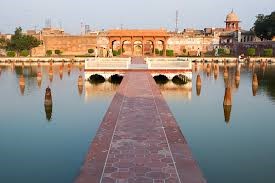
The meaning of the word ‘Shalimar’ remains a mystery, but it is probably of Arabic or Persian origin. The Shalimar Gardens, a Mughal garden complex, are located near Baghbanpura in Lahore. Its construction began in 1641 AD and was completed the following year in the era of Mughal emperor Shah Jahan.
It is one of the greatest gardens in the world, representing the Islamic concept of Paradise. The site was inscribed on the World Heritage List, along with Lahore Fort in 1981. It is a UNESCO protected world heritage site. The Mughal conferred ownership of the complex to the Arian Mian family for their services. General Ayub Khan nationalized in 1962.
Wazir khan Mosque:
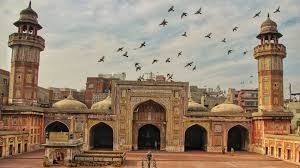
Many of us despite spending our entire lives here in Lahore have no clue where the Wazir Khan Mosque is located despite it being considered the real jewel of Lahore. I must say that Lahore’s beauty and splendor are incomplete without this majestic piece of architecture.
Among the architectural monuments of Lahore, the Wazir Khan Mosque has a very significant position. The dominating features of this mosque are the fresco, vibrant colors and calligraphy. Once you enter the mosque you will feel yourself in a world filled with color, peace, tranquility, and serenity that will appease your mind and soul.
This is a unique monument that not only reflects the spirit and talent of the Mughal builders but also of the artisans. This place of worship was built by Shaikh Ilm-ud-din Ansari, the viceroy of Punjab under Shah Jahan in 1634. It was built over seven years.
Tomb of Jahangir:
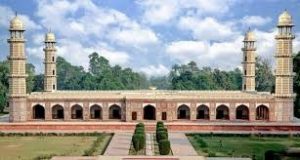
The tomb of Jahangir is a 17th-century mausoleum built for the Mughal Emperor Jahangir. The mausoleum dates from 1637 and is located in Shahdara Bagh in Lahore, Punjab, Pakistan, along the banks of the Ravi River. The site is famous for its interiors that are extensively embellished with frescoes and marble.
It is located in Shahdara, suburban Lahore. Jahangir’s son Shah Jahan had his mausoleum built along the bank of river Ravi. Though contemporary historians attribute the construction of the tomb to Jahangir’s son Shah Jahan, the tomb may have been the result of Noor Jahan’s vision. Taking inspiration from her father’s burial place, she is said to have designed the mausoleum in 1627, and possibly helped fund it. Construction started in 1627, requiring ten years for completion, and cost Rs 10 lakh.
Rohtas Fort:
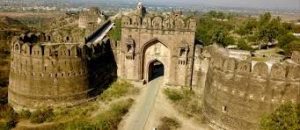
Rohtas Fort, built in the 16th century at a strategic site in the north of Pakistan, Province of Punjab, is an exceptional example of early Muslim military architecture in central and south Asia. The main fortifications of this 70-hectare garrison consist of massive masonry walls more than four kilometers in circumference, lined with 68 bastions and pierced at strategic points by 12 monumental gateways.
A blend of architectural and artistic traditions from elsewhere in the Islamic world, the fort had a profound influence on the development of architectural style in the Mughal Empire. This UNESCO protected world heritage site was built by Afghan king Fired khan, also known as a Sher Shah Suri in the 16th century. The afghan Persian architectural layout of the fort took eight years to build.
Lahore Fort (Shahi Qila):
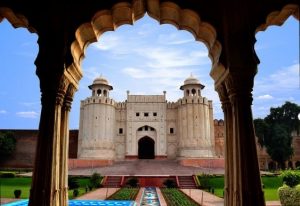
If you are a Lahori, you must have visited the Lahore Fort also known as Shahi Qila many times, but have you ever thought about the stories hidden inside the walls, bricks, doors, gardens, fountains, palaces, and the dungeons? The fort is not about the buildings it has; it is a living history of the eras it has gone through and still reflects the love, atrocities, times of tranquility and upheavals which Lahore witnessed through this fort as it was always the most wanted seat for those who ruled Lahore.
Lahore Fort was enlisted among the world heritage sites in 1981 by UNESCO. No list of the fort in Pakistan is complete without the iconic Lahore fort. It is one of the main attractions of Lahore. It lies to the northwest corner of the walled Lahore city. The building was constructed during the ruling period of Akbar 1556-1605. It was maintained regularly by the Mughal, Sikhs and the British rulers during their regimes.
Badshahi Masjid:
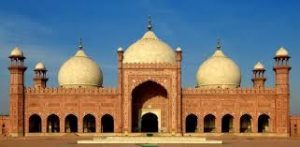
The Badshahi Mosque is a Mughal era masjid in Lahore, capital of the Pakistani province of Punjab, Pakistan. The mosque is located west of Lahore Fort along the outskirts of the Walled City of Lahore and is widely considered to be one of Lahore’s most iconic landmarks.
Minar-e-Pakistan:
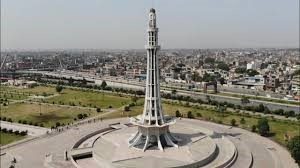
Minar-e-Pakistan, also translated as ‘Tower of Pakistan’ and ‘Minaret of Pakistan’ was built to commemorate Pakistan Resolution (Lahore Resolution), which was adopted during the All India Muslim League session of 22-24 March 1940, held at the Minto Park (now renamed as the Greater Iqbal Park).
It also called for some time Yadgar-e-Pakistan (Pakistan Resolution Memorial). The unfolding flower-petals represent happiness and abundance besides symbolizing wealth, fortune and prosperity which the independent state of Pakistan promised to its inhabitants.
The flowers also show purity, and the literal meaning of the word ‘Pakistan’ is the ‘Land of the Pure’. The monument of Minar-e- Pakistan represents the struggle for freedom and their countless sacrifices. It also glorifies Islam and accepts the sovereignty of Allah.
Taxila Museum:
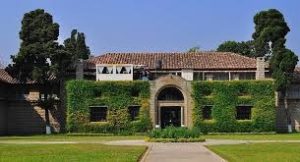
Taxila Museum is located at Taxila, Punjab, Pakistan. The museum is home to a significant and comprehensive collection of Gandhara art dating from the 1st to the 7th centuries CE. Most objects in the collection were excavated from the ruins of ancient Taxila
Khewra Salt Mine:
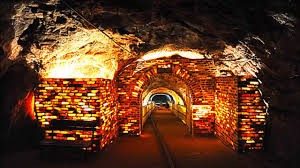
The Khewra Salt Mine is located in Khewra, north of Pind Dadan Khan, an administrative subdivision of Jhelum District, Punjab Region, and Pakistan. The mine is located in the Salt Range, an outer range of the Himalaya Mountains which rises from the Indo-Gangetic Plain. It is Pakistan’s largest, the world’s 2nd largest.
Katas Raj Temple:
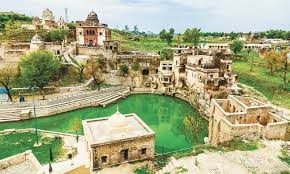
Along the M2 Motorway, near the town of Kallar Kahar, lies a piece of our forgotten history: the Katas Raj Temples. Surrounded by blue skies and dense vegetation, the temples stand in reverence to the gods and goddesses of Hindu mythology.
Located at an altitude of 2000 feet, the whole complex covers a space of around 260 canals. Historical records suggest that the construction of the complex dates back to the 11th century when it was built under a Kashmiri kingdom. The stunning temple surrounded by the crystal blue pond is a sacred place for the Hindu community.
It is situated in the katas village of the chakwal district. The pond is surrounded by Buddhist stupa and satghara, which comprises of seven ancient temples. It is believed that the pond possesses the power to wash all sins of a person if he baths in it.
Kallar kahar:
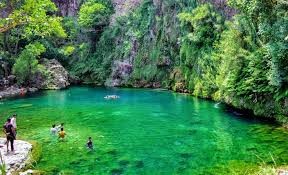
Kallar Kahar is a town and subdivision of the Chakwal District in Punjab, Pakistan. It is the capital of Kallar Kahar Tehsil. Emperor Babar described Kallar Kahar in his memoirs, the Takht-e-Babri, as a “charming place with good air”
Derawar Fort:
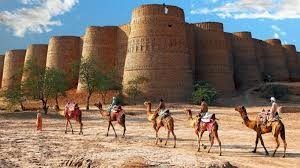
Dewar fort is located 100 kilometers (62 miles) from Bahawalpur, Pakistan. This stronghold is the largest and most magnificently sustained fortress of Cholistan. It is a square foot and each wall is 204.8 meters (672 feet) in length, vertically 30 meters (98.4 feet) high and the total circumference of its walls is 1500 meters (4921.5 feet).
The gate of the fortress is on its southern side and is reached by a winding ramp. Most of the bastions of fort present geometric design made by burnt bricks. The strong fort standing over the semi-desert is visible from miles around. Hindu Rajput, Rai Jajja Bhati of Jaisalmer was the one who initially built a fort on this site. The fort remained under the control of a royal family of Jaisalmer until 1733 A.D, when, Nawab’s of Bahawalpur captured this fort.
Noor Mahal:
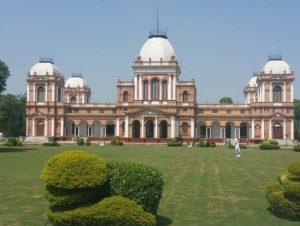
Everyone knows about the Taj Mahal, a masterpiece of Muslim art that was built by the Mughal Emperor in Agra one year after the death of his beloved wife Noor Jahan. In the same tradition, fourth Nawab of Bahawalpur, Nawab Sadiq Muhammad, also built a palace in Bahawalpur State for his queen. The name of the palace was also attributed to Nawab’s beloved queen’s name.
Construction of Noor Mahal started in 1872 and was completed in 1875 after three years at a high cost of RS 1.2 million. The architectural drawing was made by Hannan based upon Italian design. It comprises an area of 44600 square feet. Noor Mahal was built with extreme care and hard work as a token of love by the Nawab. His wife only spends the night in the palace due to the proximity of Basti Maluk Shah Graveyard.


